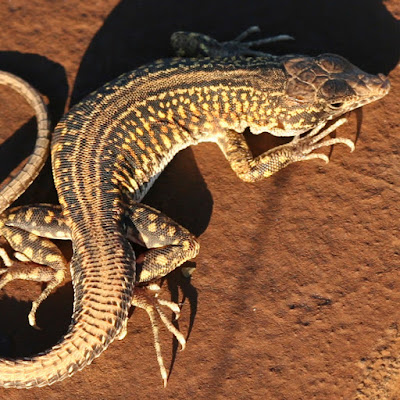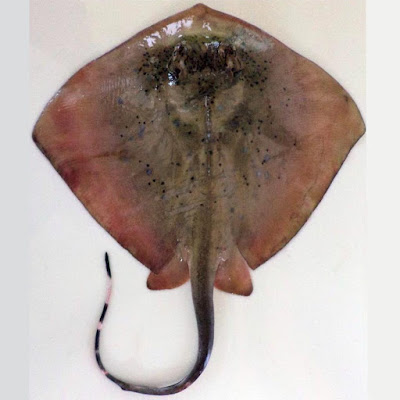[Most Recent Entries] [Calendar View]
Wednesday, September 6th, 2017
| Time | Event | ||
| 5:23a | [Herpetology • 2017] Resolution of the Types, Diagnostic Features, and Distribution of Two Easily Confused Sand Lizards, Pedioplanis laticeps (Smith, 1845) and P. burchelli (Duméril & Bibron, 1839) (Squamata: Lacertidae)
Abstract Within the genus Pedioplanis the two basal species P. laticeps and P. burchelli are phenotypically similar. In this study we examine material of both species to determine diagnostic characters and we revise the distribution of Pedioplanis laticeps. For this we used data from museum collections, literature records, as well as results from our own surveys. Careful examination of the type material of P. laticeps and P. burchelli, as well as additional specimens, confirmed several morphological characters that distinguish between the two species. A reconstruction of the taxonomic history of the species revealed that P. laticeps was described in 1845, and not in 1844 or 1849 as commonly attributed. We designate a holotype for P. burchelli, a lectotype and two paralectotypes for P. laticeps, re-describe the types of P. laticeps and P. burchelli and correct previous misidentifications. Recent literature considers P. laticeps endemic to South Africa. However, 40-year-old museum records contain specimens sampled in Namibia. Surveys in Namibia confirmed at least one extant population of P. laticeps north of the Orange River, close to an area where they were previously collected. Natural history data is very scarce for both species and a comprehensive genetic analysis, covering the entire ranges of both taxa, is urgently needed to shed light on the evolutionary history of the two sister species. Keywords: Reptilia, Lacerta capensis, Eremias, Namibia, South Africa Sebastian Kirchhof, Johannes Penner, Mark-Oliver Rödel and Johannes Müller. 2017. Resolution of the Types, Diagnostic Features, and Distribution of Two Easily Confused Sand Lizards, Pedioplanis laticeps (Smith, 1845) and P. burchelli (Duméril & Bibron, 1839) (Squamata: Lacertidae). Zootaxa. 4318(1); 82–109. DOI: 10.11646/zootaxa.4318.1.3 | ||
| 8:18a | [Ichthyology • 2017] Neotrygon indica • A New Blue-spotted Maskray (Myliobatoidei, Dasyatidae) from Indian-Ocean
Abstract The blue-spotted maskray, previously N. kuhlii, consists of up to eleven lineages representing separate species. Nine of these species (N. australiae, N. bobwardi, N. caeruleopunctata, N. malaccensis, N. moluccensis, N. orientale, N. vali, N. varidens, N. westpapuensis) have already been formally described. Here the Indian-Ocean maskray is described as a new species, Neotrygon indica sp. nov. A diagnosis based on its distinct colour patterns and nucleotide sequence at the CO1 locus is proposed. Keywords: Taxonomy; Diagnosis; Distribution Etymology. Named for the country of type locality, India. Epithet indica is the latin feminine adjectival form of the name of the country. Proposed vernacular names. Indian-Ocean Blue-spotted Maskray (English); Neeli Nishan Pakat (Hindi); Pulli Thirukhai (Tamil); Raie pastenague masquée à points bleus de l’océan Indien (French) Annam Pavan-Kumar, Rajan Kumar and Philippe Borsa. 2017. Neotrygon indica sp. nov., the Indian-Ocean Blue-spotted Maskray (Myliobatoidei, Dasyatidae). bioRxiv. DOI: 10.1101/179911 |
| << Previous Day |
2017/09/06 [Calendar] |
Next Day >> |




